What is LDP skating?
Long distance pushing (LDP), is the endurance sport of longboarding. As the name suggests, you simply try to push massive distances on your longboard. Such distances could be anywhere from 5miles/8km, to 100miles/160km, to even a 1000mile journey that spans multiple days.
And LDP is as simple as it sounds - you simply keep pushing on your longboard until you’re satisfied with how far you’ve gone. And you could technically do this on any old board - if it rolls, you can do LDP on it. However, you will have a far easier, far more efficient, and far more comfortable experience doing it on a board designed for it.
Over time, certain technologies, techniques, and gear have been designed that make LDP a lot easier, and a lot more efficient.
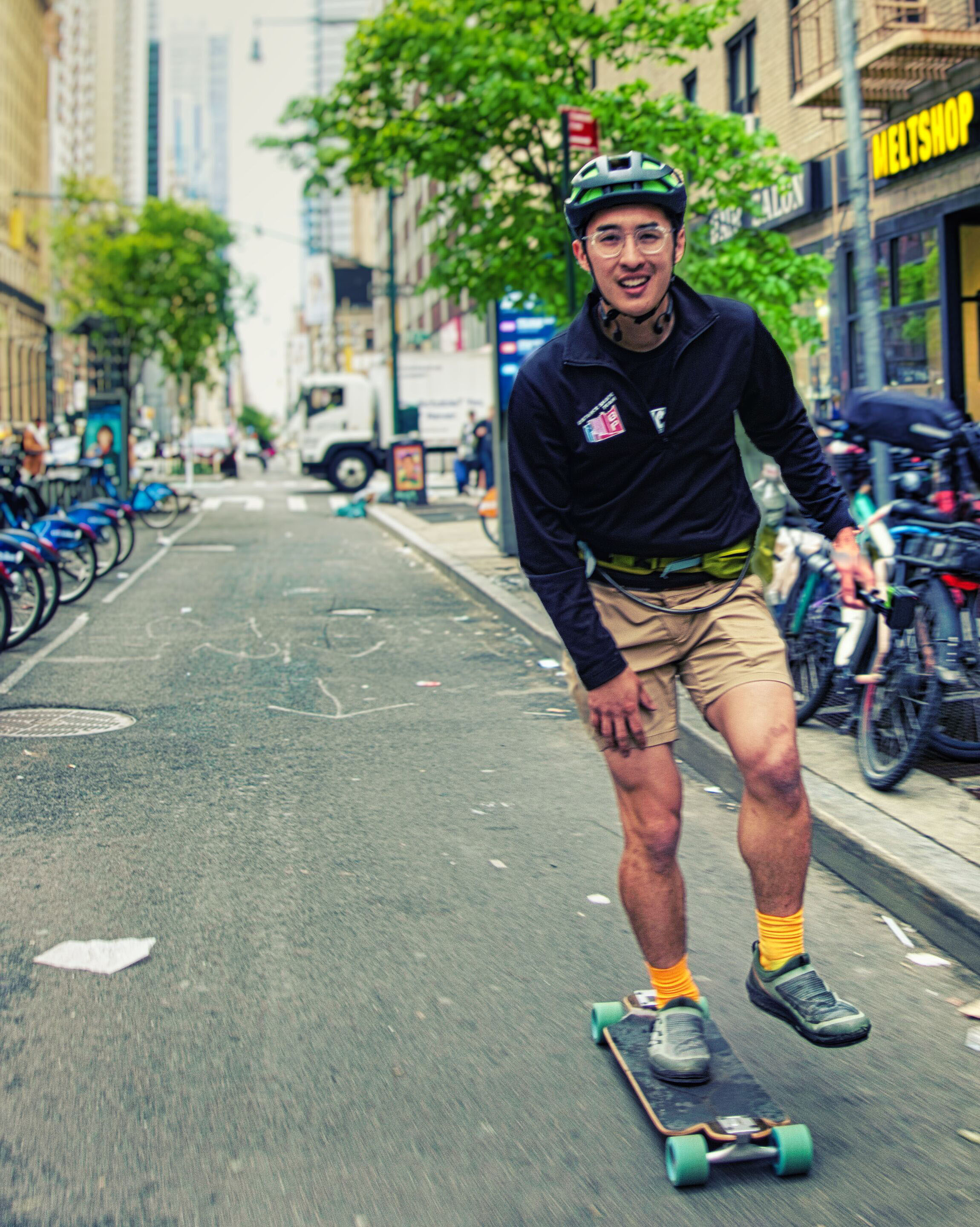 Photo by @blueridgeproject
Photo by @blueridgeproject
But LDP isn’t just about pushing far. It’s a great way to stay in shape, commute, meditate, and simply have fun on your skateboard.
I love how much of a zen state LDP puts me into. It’s been such a great way for me to de-stress and take my mind away from the challenges and happenings of life. And with how crazy the world seems to be at the moment (COVID-19, the looming recession, crazy living costs) such an escape has been incredibly valuable.
Ultimately, everyone experiences and has differing relationships with LDP. Let’s see if we can help guide you towards yours.
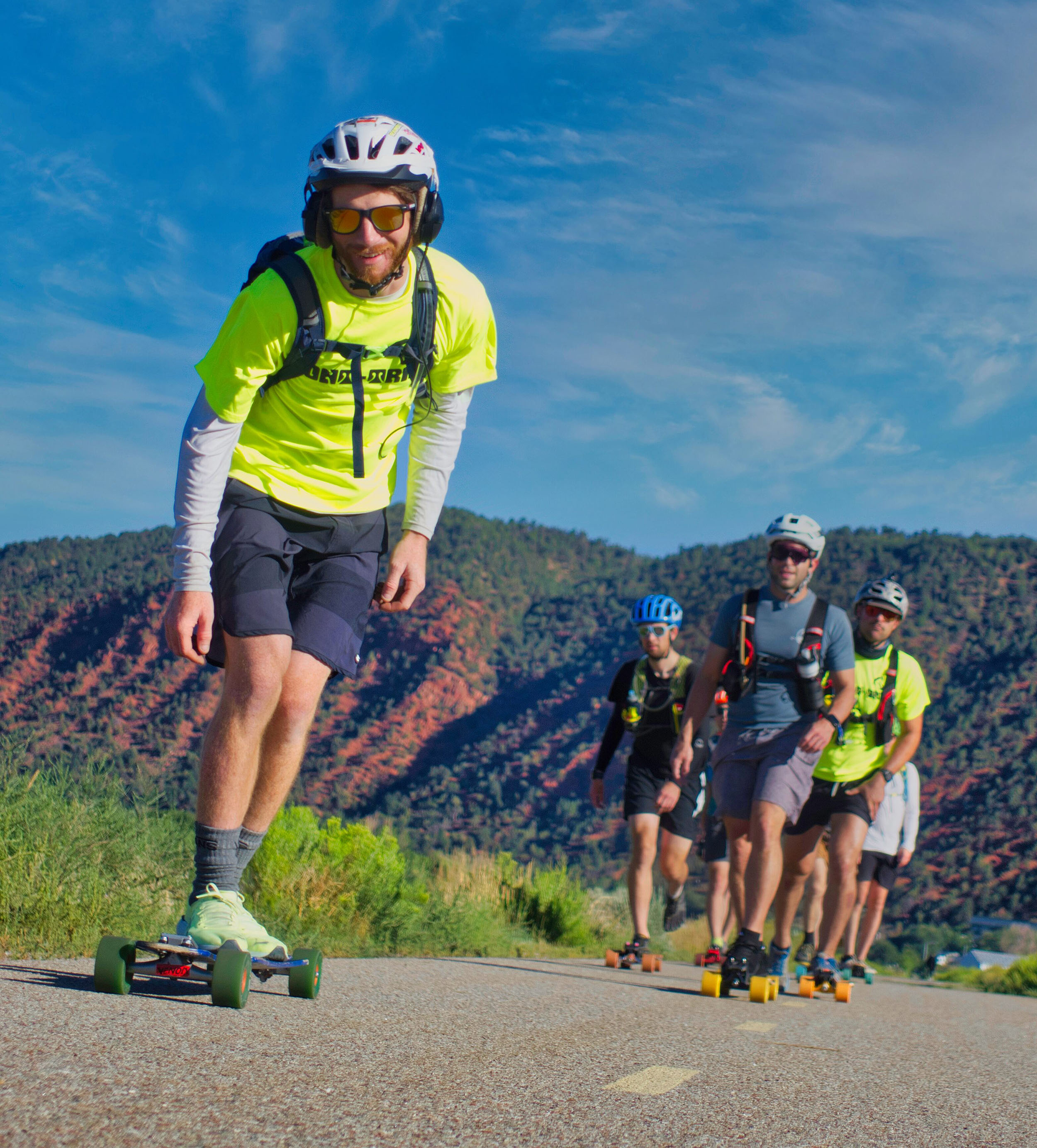 Photo by @blueridgeproject
Photo by @blueridgeproject
Some frequently asked questions about LDP
Is long-distance pushing hard?
LDP is probably one of the easiest forms of skating to get started on. All you need is a board to push on.
That said, there are some boards and some skills you can learn that would make it a much easier experience.
Do you need a special board to do long-distance pushing?
Yes and no.
Technically, you can push far on any board. That said, some boards are better for it than others. Some boards and gear accelerate better, hold on to their speed well, and offer an easy riding experience. If you want to do LDP seriously, or simply want a low-effort, easy experience. It is wise to invest in such boards.
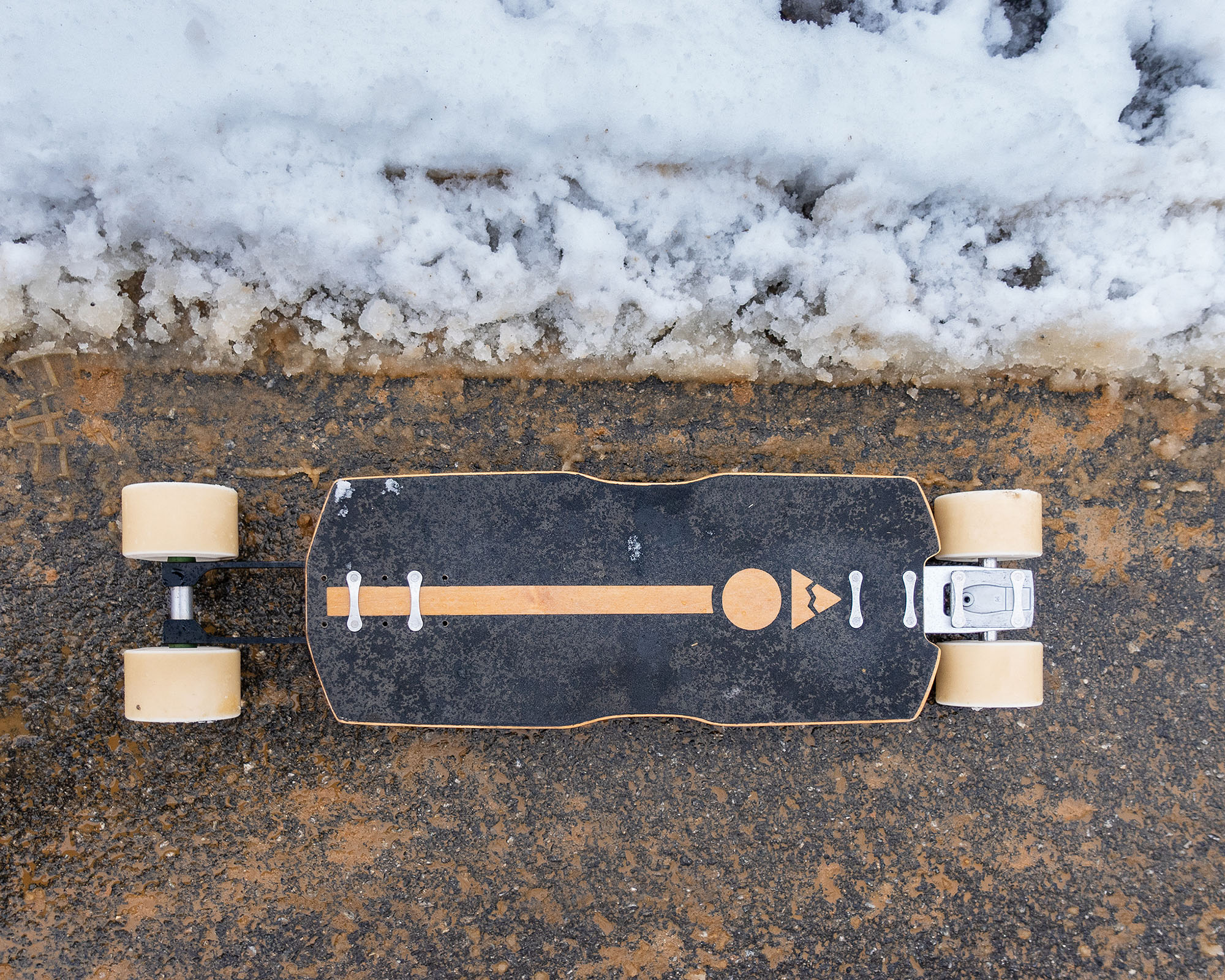 Photo by @blueridgeproject
Photo by @blueridgeproject
What kind of longboard do you need for long-distance pushing?
So the type of boards used in LDP is vast. They come in varying shapes, sizes, and follow different design philosophies.
However, most of them do share similar attributes.
A board that is low to the ground works best for LDP
Most LDP boards ride quite low to the ground. This does a few things.
The first is that it shortens the distance you have to travel to put your foot on the ground.
This makes it easier for you to push your board, and also allows you to put more “driving” force into each push.
Pushing then becomes much easier and more efficient. You lose less energy doing it and don’t have to put as much effort to get the board moving. When you’re skating far, this pays MASSIVE dividends.
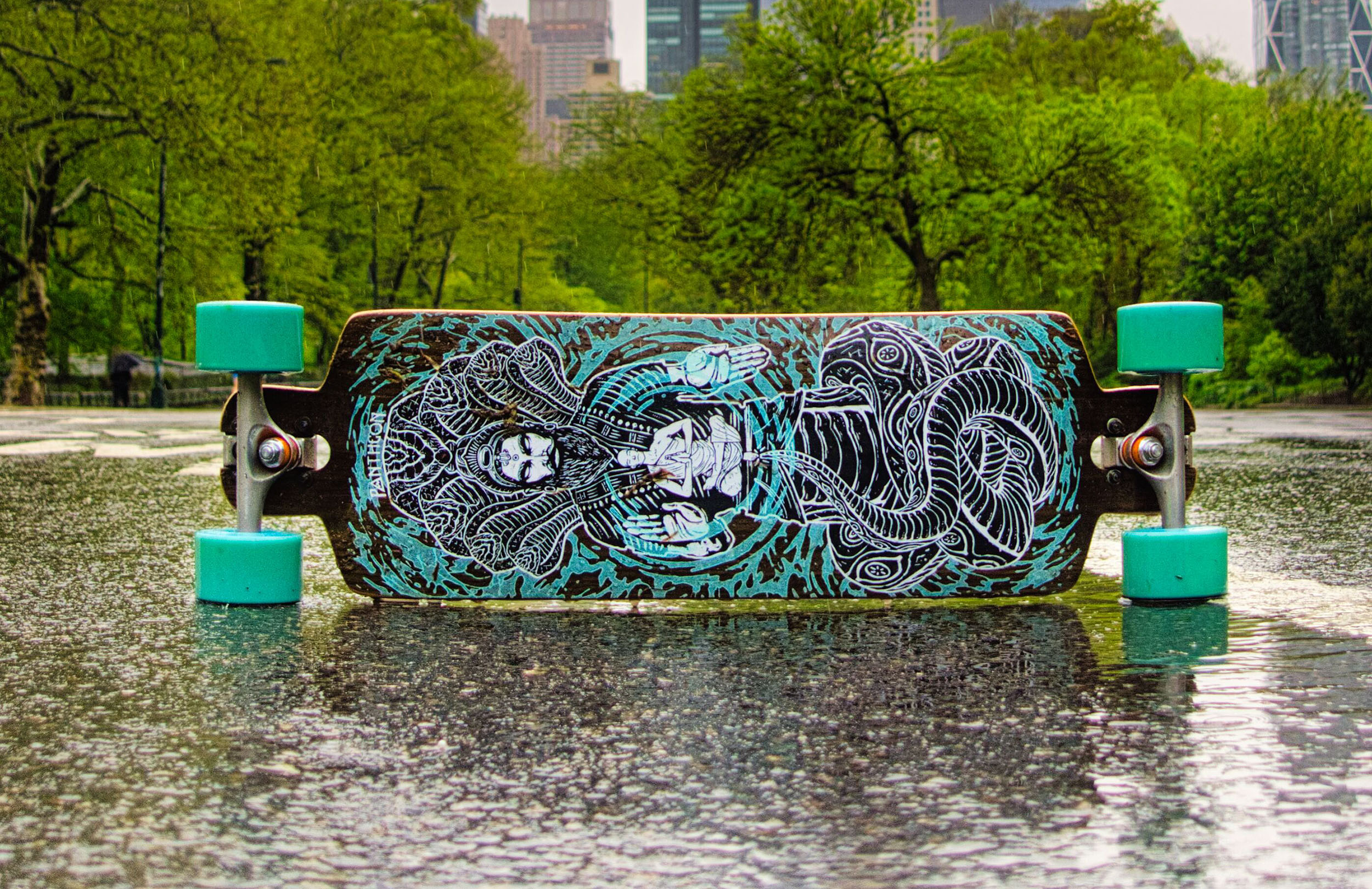 Photo by @blueridgeproject
Photo by @blueridgeproject
The ease that a board with a low-standing platform allows you to cover distances versus a tall board is considerable.
Finally, a board that rides low to the ground is relatively stable. This reduces how much work your legs need to do to keep the board going in a straight line, and makes riding the board an almost effortless experience. When you’re riding for hours, this makes a considerable difference, but not a lot of people know how to quantify the energy savings when they first stand on a board.
A board that has big wheels
The next common trend between LDP boards is the use of big 80mm+ wheels. You’ll typically find wheels, 86mm, 90mm, and even 100mm in size on LDP boards.
This is because big wheels hold on to their momentum a lot better than smaller wheels. They do suck to get moving, but once they start rolling, they want to keep rolling forever.
And this nature of theirs is key for LDP.
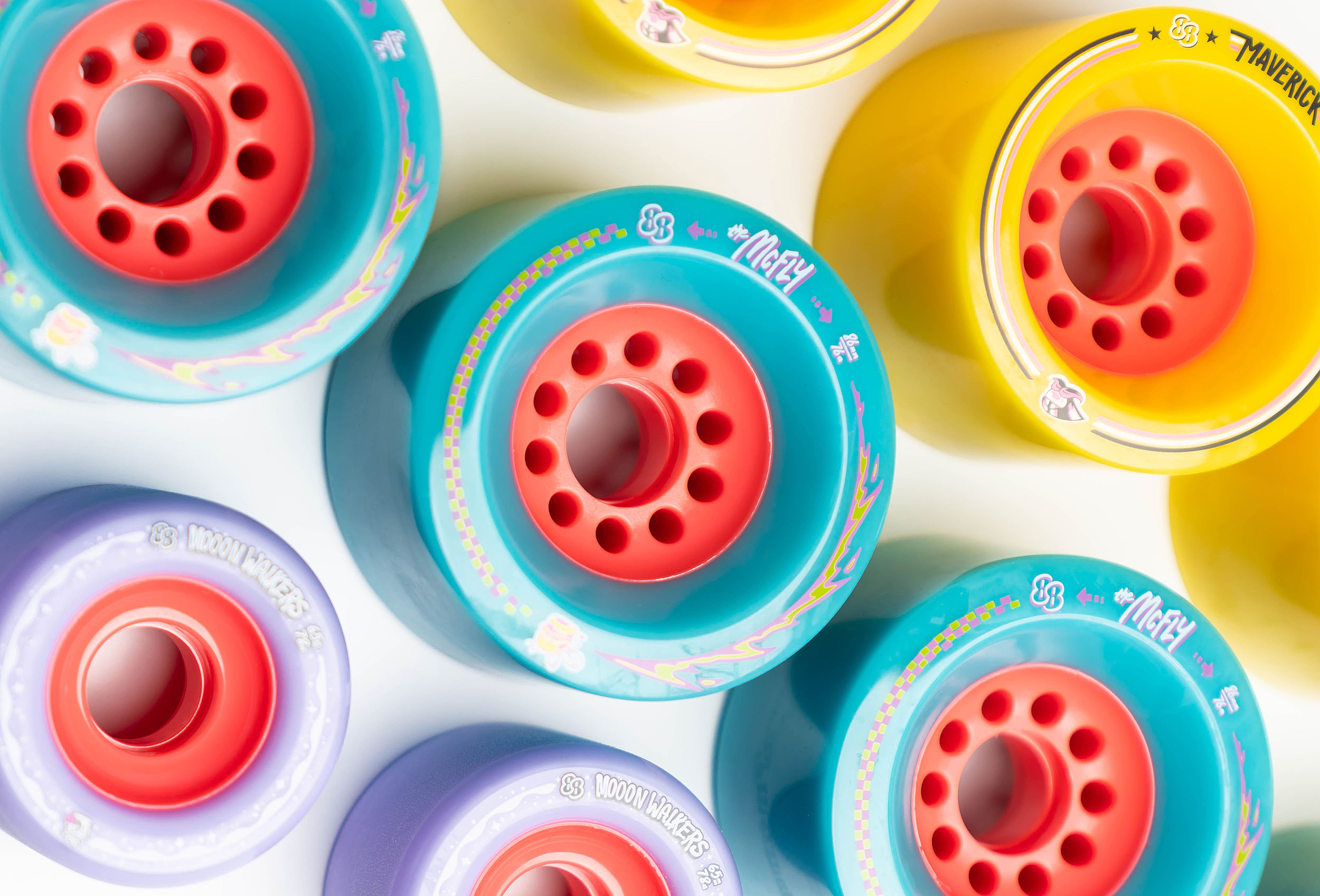
You don’t want to have to always keep pushing to keep your speed up, you want to reach a decent speed, then spend a minimal amount of effort maintaining that speed. And big wheels are great for that.
So it’s no surprise that the last Ultraskate race (a 24-hour distance race), was won on 100mm wheels. The winner Adam Ornelles chose the massive 100mm Boa constrictor wheels because of how efficient they were in maintaining their speed.
https://www.instagram.com/p/Cdgfu80p1OP/
The other massive advantage of big wheels is how they handle road imperfections. Cracks, pebbles, and rough roads don’t affect you as much.
When you’re out skating, and can’t be sure of what conditions you’ll run into, this is a massive advantage.
Being able to travel over a majority of riding environments comfortably and confidently is important for LDP.
LDP boards are quite diverse
So there’s not ONE best board for LDP. There is a variety you can choose from and they all have their advantages and disadvantages.
For example, you can choose between double drop boards like the Pantheon Ember, pumpers like the Pantheon Wiggler, or bracket decks like the Pantheon Bandito.
There is a lot of diversity in how they achieve the best and easiest riding experience for LDP.
And whilst we won’t be diving into which is best for what sort of riding - stay tuned for an upcoming article that covers that. We will be briefly describing the type of LDP boards available to you.
Double-drop boards
The entry-level option, double drop boards are the cheapest to buy and easiest to get started on.
A double drop has a low-to-the-ground platform. This is achieved by a drop to lower the standing platform below the trucks, and then by mounting the board drop-through style. Hence the name “double drop”.
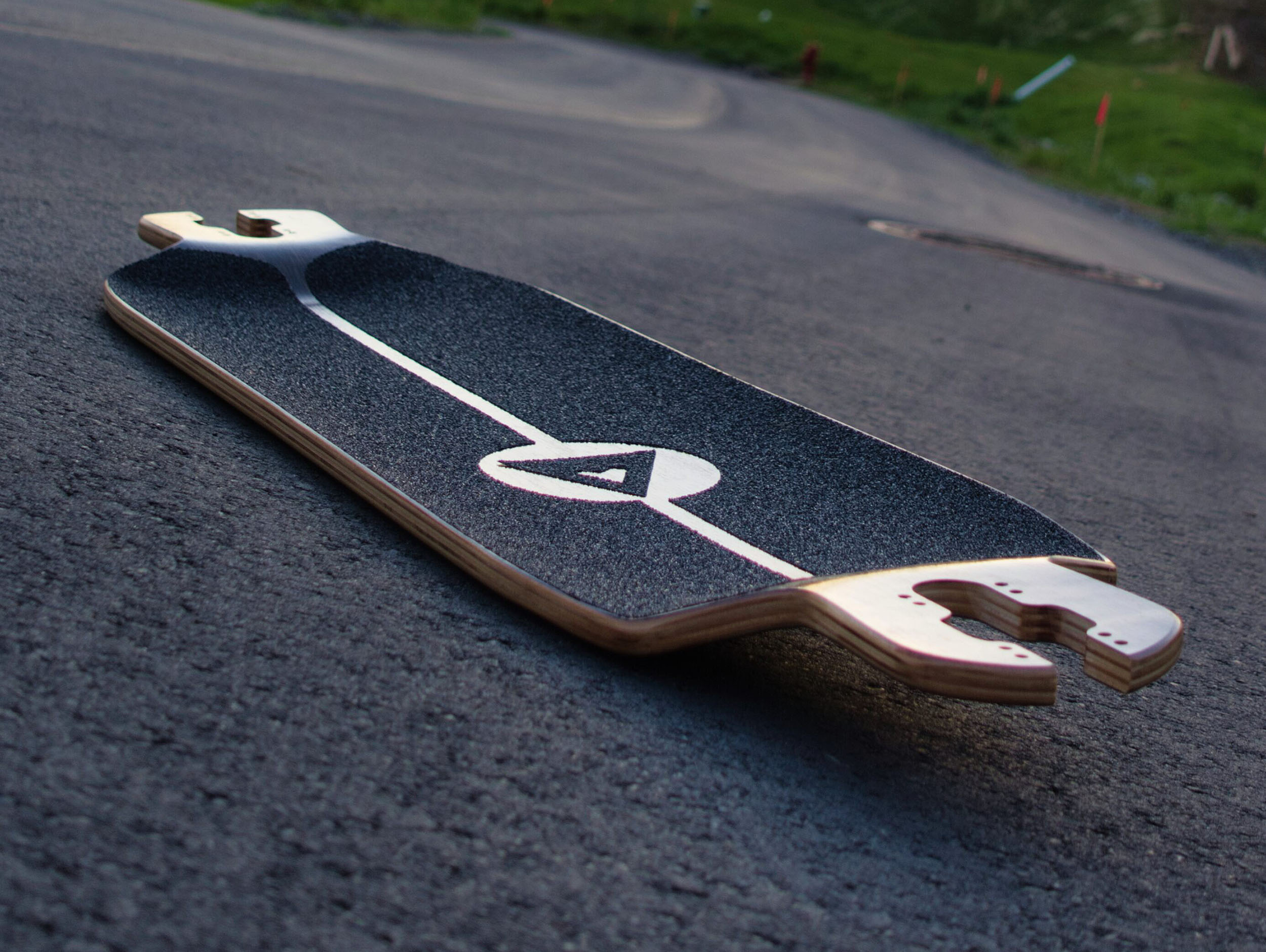 Photo by @blueridgeproject
Photo by @blueridgeproject
They are often paired with massive wheels and either reverse kingpin (RKP) or traditional kingpin (TKP) trucks.
Boards that have the TKP trucks ride super lower to the ground but aren’t super turny. The Pantheon Pranayama is an excellent example.
Boards that use the RKP trucks, don’t ride as low to the ground, but are more turny, and stable and have more options for upgrades (the RKP trucks have a ton of aftermarket options). The Pantheon Trip is a great example of an RKP distance board.
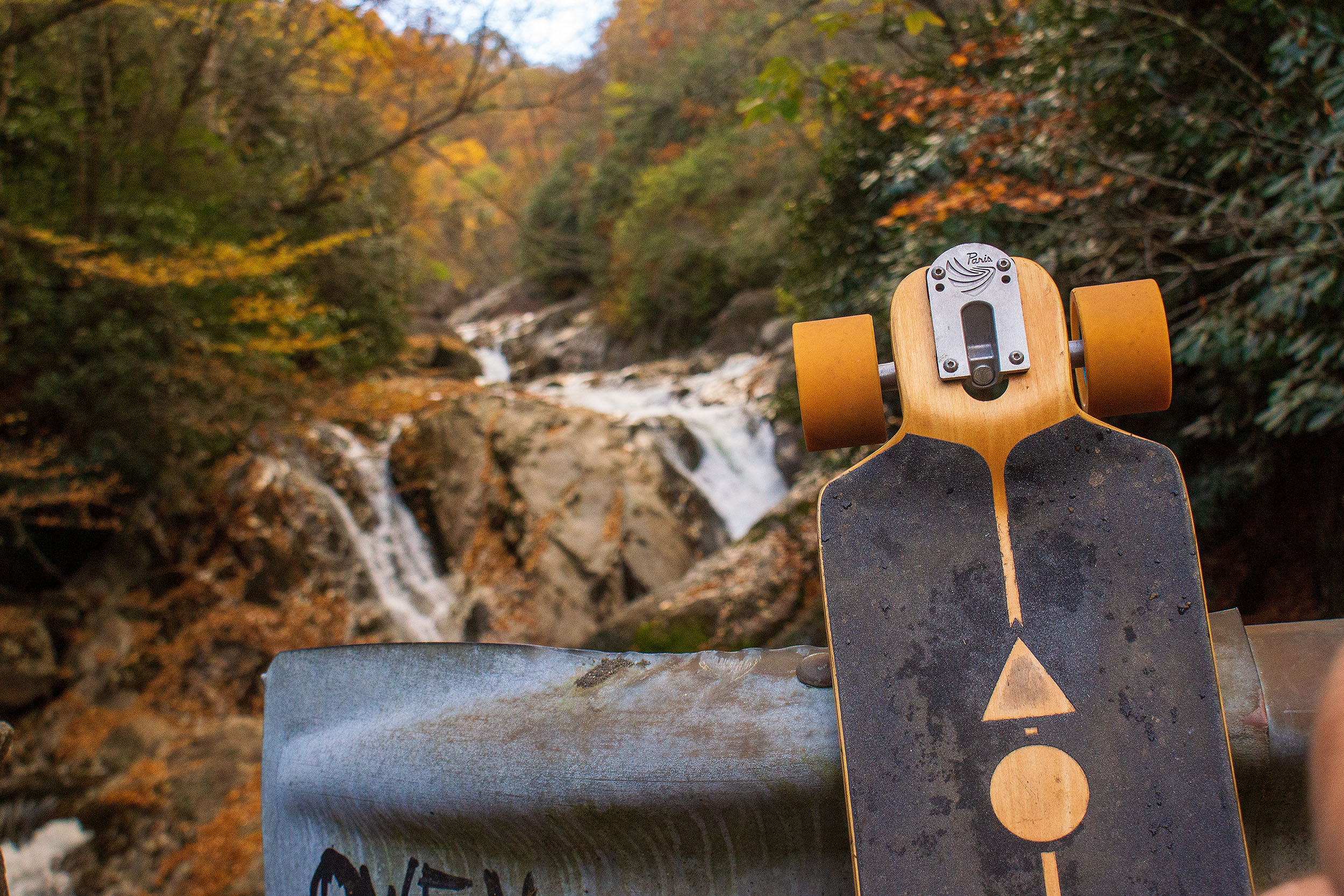 Photo by @blueridgeproject
Photo by @blueridgeproject
Bracket boards
Bracket boards are the most diverse, weird, and confusing. They are the most “personal” and setups can vary massively between two riders.
They are typically set up with a bracket, massive wheels, and precision trucks. They are the most costly and frustrating boards to put together - a lot of time can be spent fine-tuning your setup to get it to feel and work “just right”.
And because of cost and the knowledge needed to set them up, they’re not the most beginner-friendly boards - unless you have access to more experienced riders to help you.
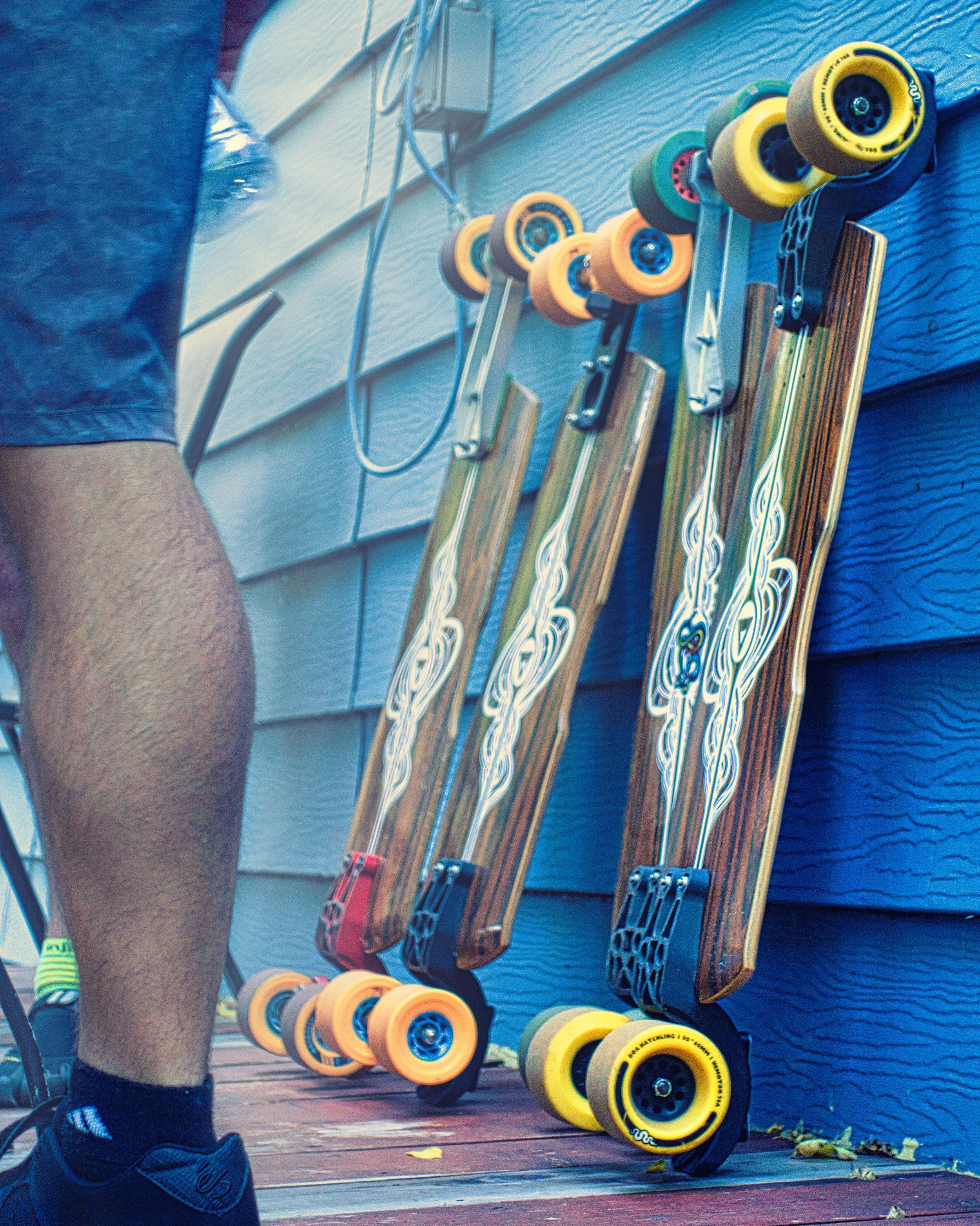 Photo by @blueridgeproject
Photo by @blueridgeproject
Though there are some budget-style bracket boards out there, the overall cost is still quite high.
A bracket board will be set up according to a rider’s needs. Some want their setups tuned to allow them to push as far as they can as quickly as possible - as highlighted by the Joe Mazzone pro model (the Pantheon Bandito) which helped him set the staggering 313.9miles in 24-hours record - though we can’t understate how much the rider’s fitness and determination contributed to that
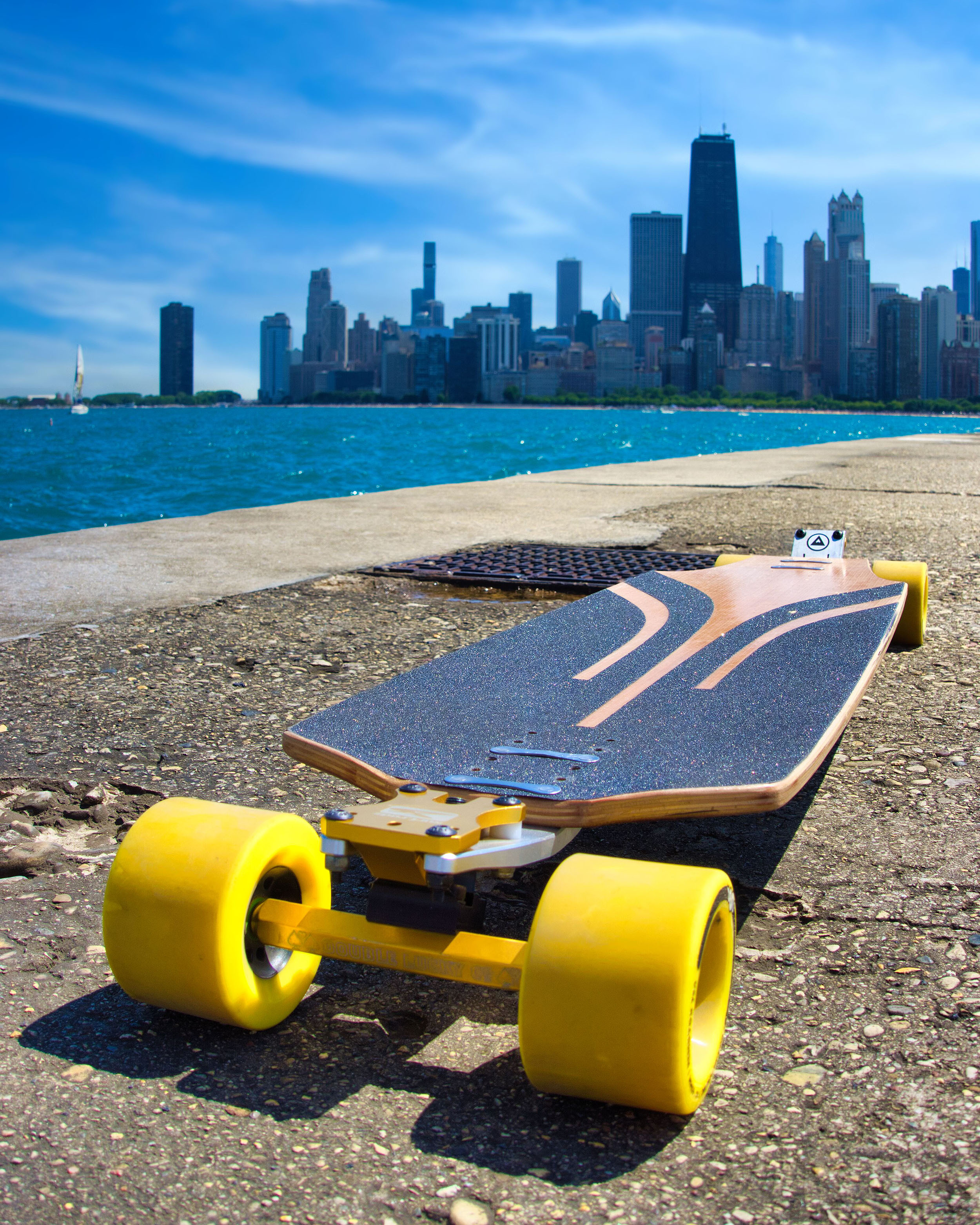 Photo by @blueridgeproject
Photo by @blueridgeproject
Others want something that, as with the Pantheon Wiggler for example (though it is an outlier in the bracket board universe for sure), allows them to set up a bracket board or a top mount pumper.
Top mount pumpers
Pumping as we explain below, is the ability to aggressive back and forth turning, into forward momentum. It allows you to skate for miles without actually having to push.
Top mount pumpers are boards designed to allow you to pump efficiently. They have a taller ride height to allow you to maximize how much and how quickly your trucks turn and thusly maximize how much forward momentum you can generate.
The Pantheon Genesis is a great example of a top mount pumper.
 Photo by @blueridgeproject
Photo by @blueridgeproject
A good quality pumping setup won’t set you back as much as a bracket deck. They are more affordable and you can get a budget option similarly priced to a double-drop board. The setup is a little bit complicated but is not bad once you learn some basics.
Pumping is a very specific type of riding though, and it’s best to go into it once you have a bit of experience and a firm idea of the type of riding you want to do.
What skills do you need for LDP?
Pushing techniques
Simple pushing
As we’ve established, being able to simply push on your board is good enough to allow you to cover a given distance. But you can develop this further. The more you skate, the better your balance on board will be and your pushing will become more effective.
I find a lot of beginners aren’t confident standing with one foot on board, and this limits how well they push, and ultimately how fast they can cover distances.
It’s a really simple thing, but it does make a difference. So when you start don’t skip out on developing your balance, and putting the practice to improve your push.
Skogging
Skogging is the act of pushing with alternate legs - pushing with your front leg, then switching to pushing with your back leg.
This is an extremely efficient way to push.
Because you use alternate legs when pushing as opposed to just one, you get less tired as the effort and work is done between two legs. This simply allows you to push for longer and further before getting tired.
It is admittedly, a pretty awkward thing to learn, and it takes a couple of weeks to get the basics and develop competency. But it is a MUST LEARN skill for LDP. With splitting the work between both of your legs, the distances you can cover multiply. And if you can’t do it, you’re putting a massive limiter on your skating.
And even if LDP isn’t your goal, skogging is awesome to know for casual skating and cruising too. It allows you to even out your legs, and not have one more toned and muscular than the other …
Pumping
Pumping is a technique that allows you to propel yourself and the board forward without pushing.
It works by carving back and forth and digging into your front trucks to get them to change direction quickly. This quick change in direction gives your board some forward momentum.
https://www.instagram.com/p/CeeTSV1Jkae/
Some boards built for pumping can allow you to pump to considerably high speeds and maintain those speeds for considerable distances.
It’s certainly a useful skill to have, and a lot of riders will mix it with skogging to cover distances efficiently.
Is it hard to pump your longboard?
There is certainly a bit of skill to pumping, but it is fairly straightforward - wiggle.
That said, there is a lot of subtlety to it - different boards require different rhythms of wiggling, and different speeds require different amounts of wiggling. You could honestly write paragraphs on what works best in different situations.
The other side of it is the type of board/setup that will be best for it. It’s a skill on its own, using your knowledge and experience to set your board up into an efficient pumper.
It’s a deep topic and maybe one of the things a beginner should shy away from initially. Once you do have your bearings and understand basic things, it’s a great topic to dive into.
Endurance
Endurance will be your ability to maintain effort for a given amount of time.
https://www.instagram.com/p/CgPDW09DoEF/
Initially, you may not be able to cover great distances without feeling too exhausted. But the more you skate, the easier it will be.
Endurance is like any other skill, with deliberate practice and patience, in time you’ll be able to tackle great distances with minimal effort. Hydration, nutrition, and energy management It can’t be understated how important it is to keep up your energy and hydration levels during a skate. They can sometimes be the difference between a distance ride being a breeze or it being an excruciating experience.
Knowing what to eat, when to eat, what to drink, and when to drink is a skill in itself. And this knowledge comes from research, experimentation, and listening to the subtle cues from your body.
If you’re looking to do LDP competitively, or simply cover great distances, it is something you will eventually have to learn about.
What do you think? Is LDP right for you?
LDP is one of the most underrated forms of longboarding and admittedly, can be a bit intimidating to get into. But it is well worth it. LDP allows for some of the most physically challenging and fulfilling experiences you can have on a board.